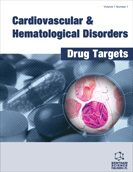Abstract
Diabetes mellitus is associated with both micro- and macrovascular complications that can lead to significantly elevated incidence of retinopathy, nephropathy, neuropathy, myocardial infarction and stroke. The diabetic cardiovascular mortality rate exceeds 70% and individuals with diabetes are 2-3 times more likely to die from myocardial infarction and stroke than those with no history of diabetes even after controlling for other cardiovascular risk factors. Despite the profound clinical importance of vascular disease in patients with diabetes mellitus, our understanding of the molecular and cellular mechanisms by which diabetes promotes these vascular complications is incomplete. Endoplasmic reticulum (ER) stress and the unfolded protein response pathways have been previously associated with the development of several different diseases, including neurodegenerative disorders, cancer, and obesity. In addition, ER stress has been directly implicated in complications that are associated with diabetes, including pancreatic β cell dysfunction and insulin resistance. In this review we examine the potential role of endoplasmic reticulum stress in the initiation and progression of hyperglycemia- associated atherosclerosis.
Keywords: Diabetes mellitus, atherosclerosis, endoplasmic reticulum (ER) stress, unfolded protein response




























